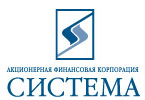|
|
|
 |
Virtual Tours round the Russian Museum The Mikhailovsky Garden |
     |
The Russian Museum
»
The Mikhailovsky Garden
The Mikhailovsky GardenThe Mikhailovsky Garden is one of the rare monuments of the landscape architecture of the 18th – first third of the 19th centuries. It is a unique combination of two different styles of the landscape art: of the regular or French and the landscape or English. It is also a bright example of architectural unity of a building (Mikhailovsky Palace) and a landscape (Mikhailovsky Garden), created after the design of the great architect Carlo Rossi. The territory of the modern Mikhailovsky Garden at the time of Peter the Great belonged to the so-called third Summer Garden, also known as the Swedish garden. Having laid Sadovaya street to the Field of Mars, Rossi defined the configuration of the palace garden. Its eastern edge was accentuated by the spear-shaped railing, the western ran parallel to the Catherine Canal (now Griboyedov Canal), the southern was closed by the palace façade, and the northern edge of the garden was closed by the bank of the Moika River. In front of the garden façade of the Mikhailovsky Palace there was a spacious meadow of an uneven oval form, framed with groups of rampant trees. The architect created a landscape garden typical for Classicism, but had carefully preserved its Baroque pond, decorating it with relief cast-iron bridge. According to the same project a pavilion with granite quay edged by a laced cast-iron railing was built at the bank of the Moika River. In 19th – early 20th centuries the Mikhailovsky Garden was a place for holding various fêtes. After the revolution of 1917 the garden was turned into a park for the city-dwellers. In 1999 the Mikhailovsky Garden was handed over to the Russian Museum. From 2002 the garden has been reconstructed by the museum; the purpose is to recreate the integrity of the garden’s composition, to the utmost retaining the original outlines by Carl Rossi. |
The Project “The Russian Museum: the Virtual Branch” |